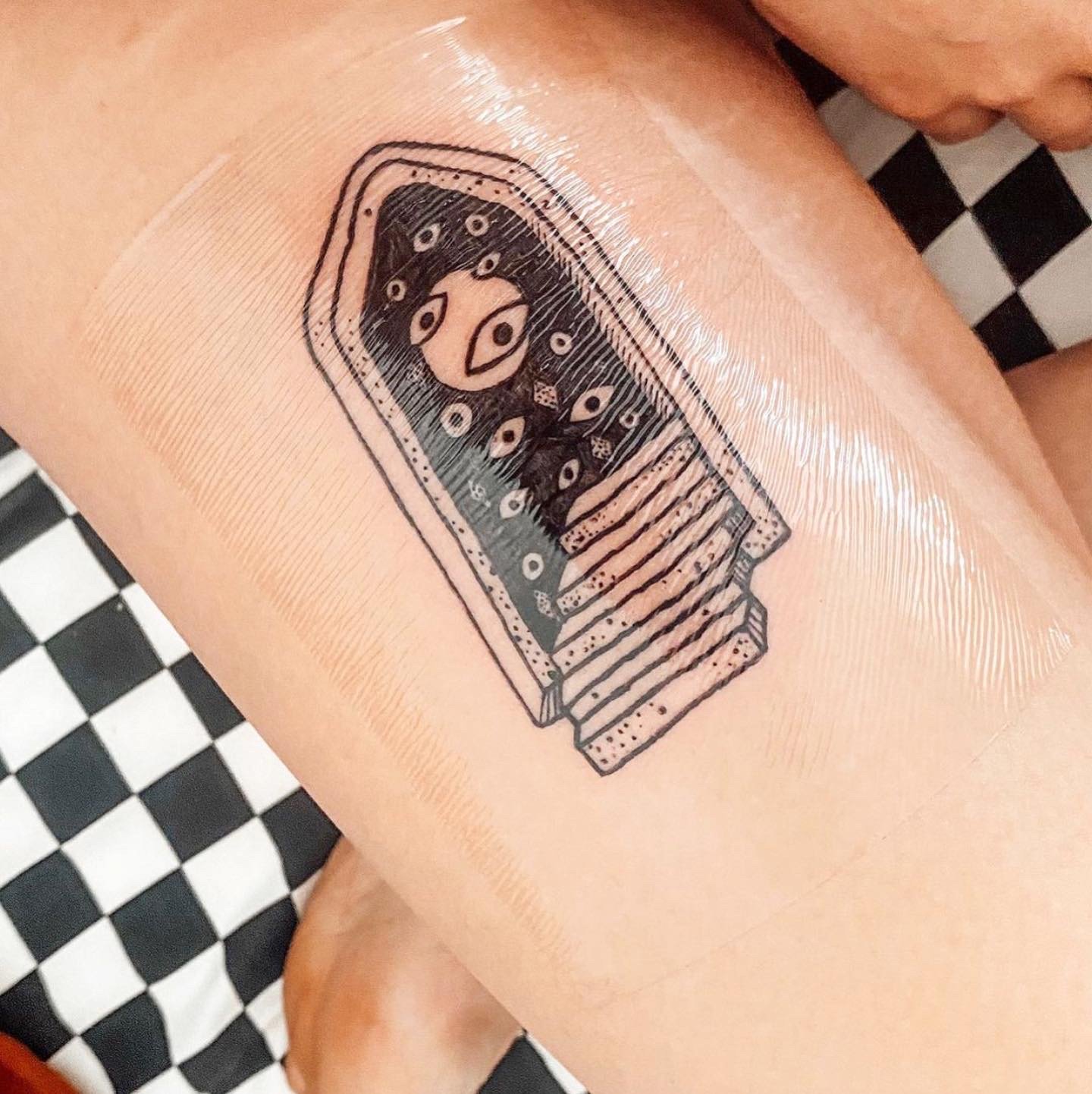Caring for Your Healing Tattoo
Every good piece of body art needs great aftercare
Here’s a reminder of your aftercare responsibilities for the next few weeks
Expect the healing process to take anywhere from 3-4 weeks on average.
Bandage Process
If bandaged with second skin (clear adhesive bandage), leave your bandage on 1-5 days. The bandage is waterproof, so you can shower, but no swimming or submerging in the bath. If bandaged with saran wrap and/or a soaker pad, remove your bandage in about 4-8 hours (pending your skin, sweat level, and what activities you have the rest of the day). I like to leave my saran wrap on until I’m getting ready for bed. I personally like to apply a fresh layer of saran wrap for the first night’s sleep for both the health of your tattoo AND to save your sheets from ink and blood marks—especially on large or heavily worked pieces. Some people prefer to leave their fresh tattoos uncovered, I only recommend against this if you share your bed with others, animals, or if your bedding isn’t freshly washed.
When ready, remove your bandage. For second skin, I personally recommend peeling it back slowly in the same direction (against the skin) as you would a waing strip, but some artists recommend stretching the bandage away from itself like you’d remove a command strip. In either case, pull your skin taught, and make sure to warm the adhesive up in a warm (not blazing hot) shower for just one or two minutes— anything longer can leave adhesive behind. It’s normal to feel a little pulling at the skin from the adhesive, but in case of pain, either use warmer water or wait an extra day for the adhesive to loosen. If adhesive is left on the skin after bandage removal, apply a little bit of clean coconut oil and lightly massage until the adhesive pills and rolls off.
Wash your tattoo with a mild liquid soap (like unscented or baby Dr Bronners) and pat it dry with a clean towel.
Apply a thin layer of moisturizer, such as shea butter (my favorite) or another natural, fragrance-free product.
If using a petroleum-based product such as Aquaphor, use extremely light layers as petroleum can suffocate your tattoo/wound and lead to infection. Additionally, please be aware that using petroleum-based products have been shown to cause tattoos to fade faster.
Repeat these cleaning steps 1-2 times a day until the tattoo feels settled into your skin! I do recommend moisturizing your skin daily as maintenance, as well, but this isn’t considered a necessity.
Healing Process
It’s normal for a tattoo, especially a machine-made tattoo, to get itchy and scabby. Don’t scratch it! Slapping it or moisturizing it can help. If it’s incredibly itchy, try applying an ice pack (wrapped in a clean towel) for a few minutes to help minimize the itching.
Be sure not to expose your tattoo to sun until it is healed. A bandana, the leg portion of an old sock, or even a face mask all make great ways to cover a fresh tattoo if you will be out in the sun. The reason you should keep your tattoo covered is that the outer layer of your skin is your first protection against harmful UV rays, and a tattoo has punctured that layer thousands of times.
A new tattoo is an open wound, so no swimming or soaking until it is healed and feels settled fully into your skin (generally this takes 3-4 weeks!). Soaking or swimming before this time can cause serious infection and poor healing, plus you’ll be exposing your tattoo to the sun prematurely! Do not risk going swimming with a new tattoo.
In the long term, be sure to use SPF on your tattoo any time you will be out in the sun! UV is the main agent that will damage your tattoo and cause it to blur and fade. Think of the sun as a low-grade tattoo removal laser—because that’s what it is!
It’s normal for tattoos to lose a small amount of saturation, blur, and look slightly different upon healing, but that doesn’t mean you shouldn’t reach out if you feel your tattoo might need a touch-up. Your artist cares about the quality of the piece and your happiness with it, so please be in touch if anything is needed after your healing process.
Infection
In rare cases, even the best cared for tattoos may develop an infection. This would potentially look like a yellow-green tinge to the scabbing area, may feel very hot and painful (some mild redness to a machine tattoo is normal for the first few days), and the skin would likely be extremely red and irritated around the tattoo. If this begins to happen to your tattoo, don’t panic, but please reach out to your tattoo artist immediately with photos of what’s happening so they may provide advice, and also reach out to a doctor. If you’re uncertain about what’s happening in your healing process, please don’t hesitate to reach out with any questions! Your artist wants you to feel confident in their work, your experience, and they want the best possible outcome for your tattoo. Ask anything!
